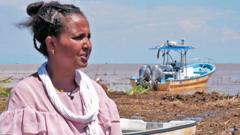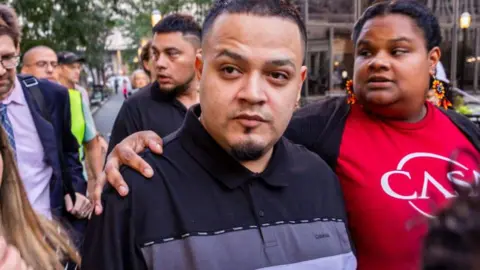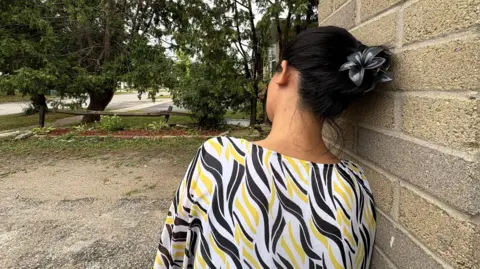As the sun dipped below the horizon of Lake Turkana, Senait Mebrehtu mourned her daughter, Hiyab, casting flowers into the lake that had claimed the life of her 14-year-old child. The Eritrean mother, who had fled religious persecution and sought asylum in Kenya three years earlier, traveled to the lake to mark the anniversary of Hiyab’s tragic death during a perilous crossing attempted with her sister.
Hiyab's sister survived the crossing—a harrowing journey often undertaken by desperate families fleeing the oppressive regime in Eritrea, where conscription often means forced labor and years of servitude. Senait had initially come to Kenya with her two younger children, leaving Hiyab and her older sister behind due to the risks associated with their ages and potential military conscription.
“Had I known of the dangers posed by smugglers and the perils of crossing Lake Turkana, I never would have allowed my daughters to attempt such a journey,” Senait told reporters. In a cruel twist, smugglers touted a new route—the so-called "digital route"—that was increasingly being used for human trafficking.
A local smuggler, who asked to remain anonymous, confirmed that with stricter patrols across roads, they’ve turned to the lake to transport migrants for profit—charging around $1,500 per individual. The profits are substantial compared to the average Kenyan income, and the perilous journeys have become commonplace.
Osman, an Eritrean who witnessed the tragic capsizing of Hiyab's boat, detailed how neglect and overloading had fatal consequences. “I saw the boat flip. Just moments later, there were casualties,” he recalled, revealing that seven perished that night.
Senait placed the onus on smugglers who, driven by greed, packed the small boat with more than 20 people, leading to what she termed “plain negligence.” Local fishermen reported seeing bodies floating in the lake, a grim reminder of the dangers faced by many migrants.
The UN refugee agency revealed that over 345,000 Eritrean refugees are currently in East Africa, with many seeking refuge in Kenya or using it as a transit point to reach safer countries like Uganda or Rwanda. The motivations behind such dangerous journeys are steeped in the geopolitical unrest of neighboring Ethiopia and Sudan, pushing thousands toward perilous routes facilitated by smugglers.
While some migrants find a semblance of safety in Kenya, others continue on to South Africa or even further afield, each carrying increasingly burdensome debts from their journeys. Many modern holding houses serve as makeshift detention locations where migrants await further processing, often facing additional hardships and threats.
The smuggler candidly explained the exploitation migrants endure, often leading to death from malnourishment, and lamented the sad reality that many families remain oblivious to the truth of their loved ones' fates.
For Senait Mebrehtu, the loss of Hiyab is a deep wound, a reality faced by countless families escaping the tyranny of Eritrea while navigating the treacherous waters of human trafficking. “We are all victims of this plight,” she states, her grief underscoring a broader narrative of tragedy that continues to unfold along the perilous routes of human smuggling across East Africa. “May God grant us healing for our beloved land.”





















